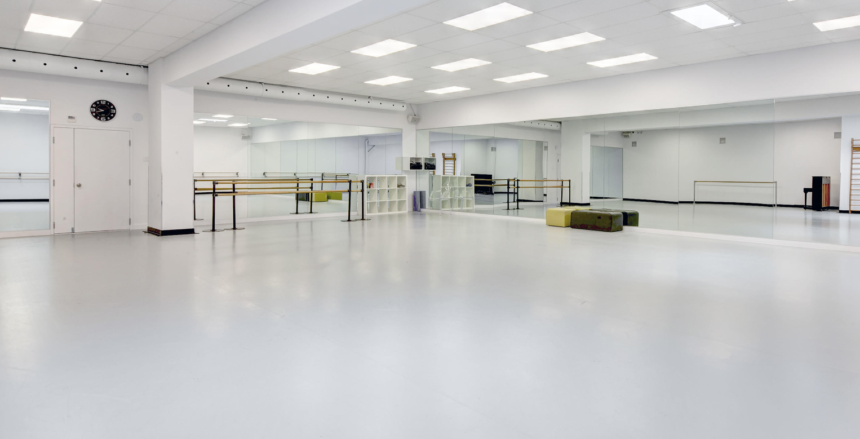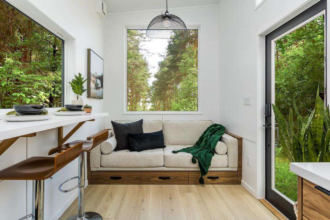Choosing the right flooring for a ballet dance studio isn’t just about aesthetic appeal. It’s about safety, performance, and longevity.
Whether you’re an instructor, studio owner, or a dancer, you understand the impact the floor has on every pirouette, leap, and plie. But with so many options available, choosing the best fit for your studio can be overwhelming. Fret not we’ve got you covered.
Read on to discover the perfect foundation for your ballet haven. Let’s begin!
Hardwood Flooring with a Sprung Subfloor
This type of flooring combines the elegance of wood with the cushioning needed for safety. A sprung subfloor has a layer of cushioning material under the hardwood surface.
This aids in shock absorption and reduces the risk of injury. Also, the resilience of the sprung subfloor lessens the impact on dancers’ joints.
Additionally, hardwood floorings provide excellent traction. It allows for graceful movements without slips or falls. Not only that!
They are also durable and can withstand the demands of daily practice. They are easy to clean, ensuring a tidy and hygienic environment for dancers. This simply offers a balance of beauty and functionality.
Cushion Vinyl Flooring
Cushion vinyl flooring is composed of multiple layers, including a cushioned backing. This cushioned backing provides a slight bounce, making it gentle on the dancers’ feet and joints.
Moreover, cushion vinyl is easy to maintain due to its moisture resistance, as well as its ability to resist scratches and stains. Cleaning is a breeze with just a simple mopping and sweeping. This makes it an excellent choice for a busy studio.
Additionally, the surface of cushion vinyl offers consistent traction. Dancers can move confidently, knowing the floor won’t cause slips.
Furthermore, these floorings come in a variety of colors and patterns. You can match it to your studio’s aesthetic without sacrificing performance.
High-Density Foam Flooring
The foam’s high density ensures it doesn’t compress easily under pressure. This means it retains its form and support over time. This type of flooring is also lightweight, which makes it easy to install and remove if needed.
Maintenance is simple with high-density foam floors. A quick sweep and mop keep them clean. Additionally, they are resistant to humidity, which helps to prevent mold and odor build-up.
But that’s not all! One of the greatest advantages of this floor is the comfort it provides. Dancers can practice for extended periods without feeling too much strain on their joints and muscles.
They are also available in various thicknesses and densities. This allows you to choose the best option to suit the specific needs of your studio.
Laminate Flooring
If you’re on a tight budget, this flooring option may be the way to go. It mimics the look of hardwood but at a fraction of the cost. This type of flooring is made from multiple layers, which include a photographic layer that resembles wood.
One of the main benefits of laminate flooring is its durability. It can withstand heavy foot traffic and is resistant to scratches and dents. This makes it suitable for busy dance studios with many classes and rehearsals.
Additionally, installation of these floors is straightforward. The pieces snap together easily, so you won’t need nails or glue. This allows for a quick setup, which means less downtime for your studio.
However, laminate flooring does not provide as much cushioning as other options like sprung hardwood or high-density foam. You might need to install a cushioned underlay to give dancers the support they need.
Rosco Adagio Tour Flooring
Adagio Tour flooring offers a non-slip surface, which ensures dancers can perform safely without the risk of slipping. Its matte finish also reduces light reflection, providing a professional appearance without distracting glare.
The flooring material is made from vinyl, which is both resilient and long-lasting. It can handle the constant movement and rigorous demands of ballet practice and performances.
Installation is simple and quick. The flooring rolls out easily and lays flat without much effort. This makes it practical for studios that might need to set up and break down their floors frequently.
In addition, the flexibility of this flooring allows it to be used over various subfloors including:
- concrete
- hardwood
- carpet
This adaptability makes it an ideal choice for different studio settings. Plus, it’s available in standard black and gray shades, which can complement any studio aesthetic.
Reversible Dance Floors
Reversible dance floors offer the best of both worlds – versatility and durability. These floors have a different finish on each side, allowing you to choose between a matte or glossy surface depending on your preference.
The switchable aspect makes it ideal for multi-purpose studios that need to accommodate other activities besides ballet. It’s also great for performances where you want to change the look and feel of the stage quickly.
Additionally, reversible dance floors are made from durable materials such as vinyl or PVC. This ensures they can withstand heavy use and still maintain their appearance over time.
Non-Slip PVC Flooring
This type of flooring provides a non-slip surface that ensures the safety of dancers. It combines durability with low maintenance, making it a practical choice for busy studios.
It is also resistant to moisture and wear, which helps it maintain its functional and aesthetic qualities over time. Moreover, it is available in a variety of colors and patterns, allowing you to customize the look of your studio.
Marley Vinyl Flooring
One of the main benefits of Marley dance floors is their slip-resistant surface, which provides excellent traction for dancers. This guarantees they can execute movements securely, minimizing the risk of slipping or tumbling.
Furthermore, these floorings are available in rolls, making it easy to install or replace sections as needed. It’s also simple to clean and maintain, requiring only regular sweeping and occasional mopping.
The floor is resistant to scratches and scuffs, ensuring a long-lasting appearance and performance. Additionally, its matte finish reduces light reflection, creating a professional look without distracting glare.
Whether you are setting up a new studio or upgrading an existing one, Marley vinyl flooring provides a reliable and stylish foundation for ballet.
Finding the Perfect Flooring for Your Ballet Dance Studio
Choosing the right flooring for your ballet dance studio is crucial. It impacts safety, performance, and maintenance. So, when you’re exploring options, consider your studio’s needs.
Ready to upgrade your dance space? Explore these options and make an informed choice today!
Did you find this article helpful? Check out the rest of our blog now!














